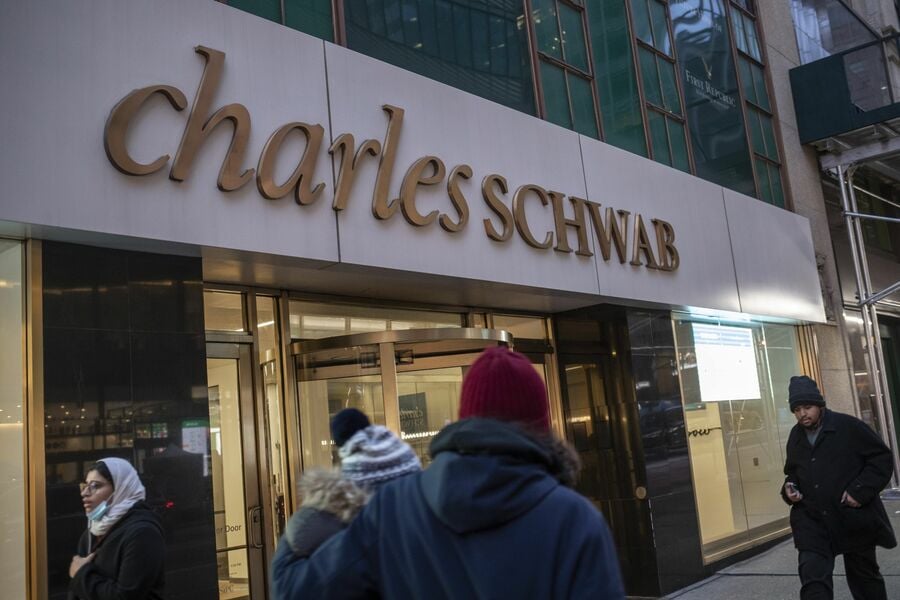

Charles Schwab Corp. started using derivatives to hedge interest rate-related risk during the first quarter.
The derivatives were valued at $3.9 billion as of March 31, Schwab said in a regulatory filing Monday.
Schwab, which runs both brokerage and bank businesses, has been ensnared in the tumult ravaging U.S. regional banks after the Federal Reserve embarked on its most aggressive interest rate tightening cycle in decades last year.
The Westlake, Texas-based company confronted swelling paper losses on securities it owns and grappled with dwindling deposits as customers moved cash into accounts that earn more interest. Schwab’s executives have said those withdrawals will abate. The pace of cash withdrawals is already starting to slow, Chief Financial Officer Peter Crawford said in a recent statement.
Shares of Schwab slid 0.2% to $47.55 in early trading at 8:35 a.m. in New York. The stock had plunged 43% this year through Monday.
To keep up with withdrawals, Schwab has been relying on higher-cost funding sources, including loans from the Federal Home Loan Bank system. Schwab had about $45.6 billion in outstanding FHLB loans and $6.8 billion in repurchase agreements at the end of March.
Last year, the company began issuing certificates of deposit — longer-term savings vehicles that lock up customer money for a fixed period. Schwab clients held $31 billion of CDs at the end of March, accounting for roughly 9% of Schwab’s total bank deposits. Since then, the firm issued an additional $6.8 billion of CDs through other brokers.
Schwab expects emergency funding measures to taper off, forecasting that its use of more expensive funding will peak this year and decrease in 2024, with only limited amounts remaining in 2025.

The leadership changes coming in June, which also include wealth management and digital unit heads, come as the firm pushes to offer more comprehensive services.

Strategist sees relatively little risk of the university losing its tax-exempt status, which could pose opportunity for investors with a "longer time horizon."

As the next generation of investors take their turn, advisors have to strike a fine balance between embracing new technology and building human connections.

IFG works with 550 producing advisors and generates about $325 million in annual revenue, said Dave Fischer, the company's co-founder and chief marketing officer.

Five new RIAs are joining the industry coalition promoting firm-level impact across workforce, client, community and environmental goals.
RIAs face rising regulatory pressure in 2025. Forward-looking firms are responding with embedded technology, not more paperwork.
As inheritances are set to reshape client portfolios and next-gen heirs demand digital-first experiences, firms are retooling their wealth tech stacks and succession models in real time.
